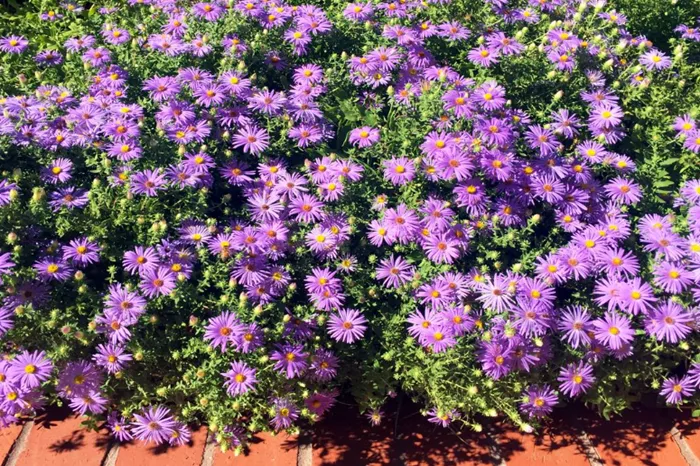The Return of Fall Asters: A Vibrant Addition to Texas Gardens.
When asked to name the most striking autumn color, purple might not be your first thought. However, the next time you encounter a bed of fall asters in bloom, you might reconsider. Their vibrant color stands out, commanding attention like the headlight of an oncoming train. These flowers are stunning, with a shade of purple that few other fall plants can match. Mums come close, but the regal brilliance of asters is truly something special.
It’s surprising that, for decades, this beautiful plant was hard to find in Texas garden centers. You’d occasionally spot it in older landscapes, or hear of gardeners sharing it with friends. But up until 25 or 30 years ago, finding this fall beauty for sale was almost impossible in Texas.
A Gradual Rise in Popularity
Slowly, fall asters gained recognition. People started to notice them, and botanical gardens began showcasing them. Even butterflies seemed to approve. Today, they’re readily available and commonly planted. If you search the plant’s scientific name, Symphyotrichum oblongifolium, you’ll discover it’s native to half of the United States, including many parts of Texas. It thrives in the limestone soils of the Hill Country, through the Metroplex, and down to the Rio Grande.
A Tough Plant with a Beautiful Display
Fall asters are hardy plants, growing between 15 and 30 inches tall. Many landscape professionals trim them lightly in late spring to keep them more compact. By shearing a couple of inches of new growth in May or June, you can encourage side branches, resulting in fuller plants and more flowers.
The plant’s thin, delicate leaves and stems stay unremarkable throughout the spring and summer. But as fall approaches, asters come to life, producing hundreds of flowers almost overnight in late September or October. Their rich lavender and purple blooms are irresistible to honeybees and butterflies, making them perfect companions to fall mums, marigolds, zinnias, and other seasonal plants.
Long-Lived and Easy to Care For
Fall asters are long-lived perennials. After they finish blooming, the plants die back to the ground. Gardeners should trim the stems down to 2 or 3 inches above the soil to mark their location, then wait for spring when they’ll regrow.
If you want to propagate fall asters, this can be done by dividing the plants in late winter, just before new growth starts. Space the new plants 15 to 18 inches apart and fertilize them with a high-nitrogen lawn food at half the recommended rate for perennials when they begin to shoot up. Water them thoroughly after fertilizing.
Growing Conditions and Care Tips
Fall asters grow best in full morning sun with some afternoon shade. They’re quite tolerant of dry soils, which makes sense given their native habitats in the rocky soils of Central Texas. However, they thrive best when kept moist throughout the growing season. They don’t have any serious insect or disease problems, which is why you often see them at old or neglected homesites across Texas.
A Plant Worth Watching
The fall aster is a plant that has patiently waited for its comeback in Texas gardens. While it’s not fully in the spotlight yet, it’s well on its way. Keep an eye out at your local nurseries this weekend and pick up a few. After seeing them bloom, you’ll likely be back for more.
Related topics:
- 9 Flowers to Plant by November for Stunning Spring Blooms
- European Forest Plants Are Moving West: Study Indicates Nitrogen as the Primary Factor
- Can Music Aid Plant Growth? Research Indicates Sound Might Enhance Beneficial Fungi for Plants


